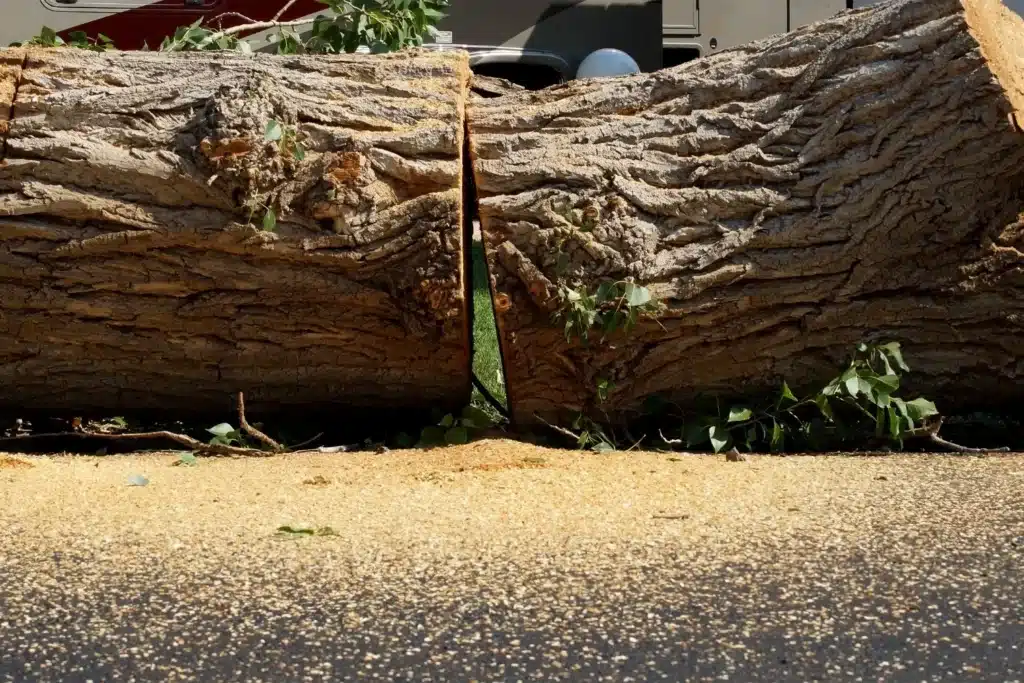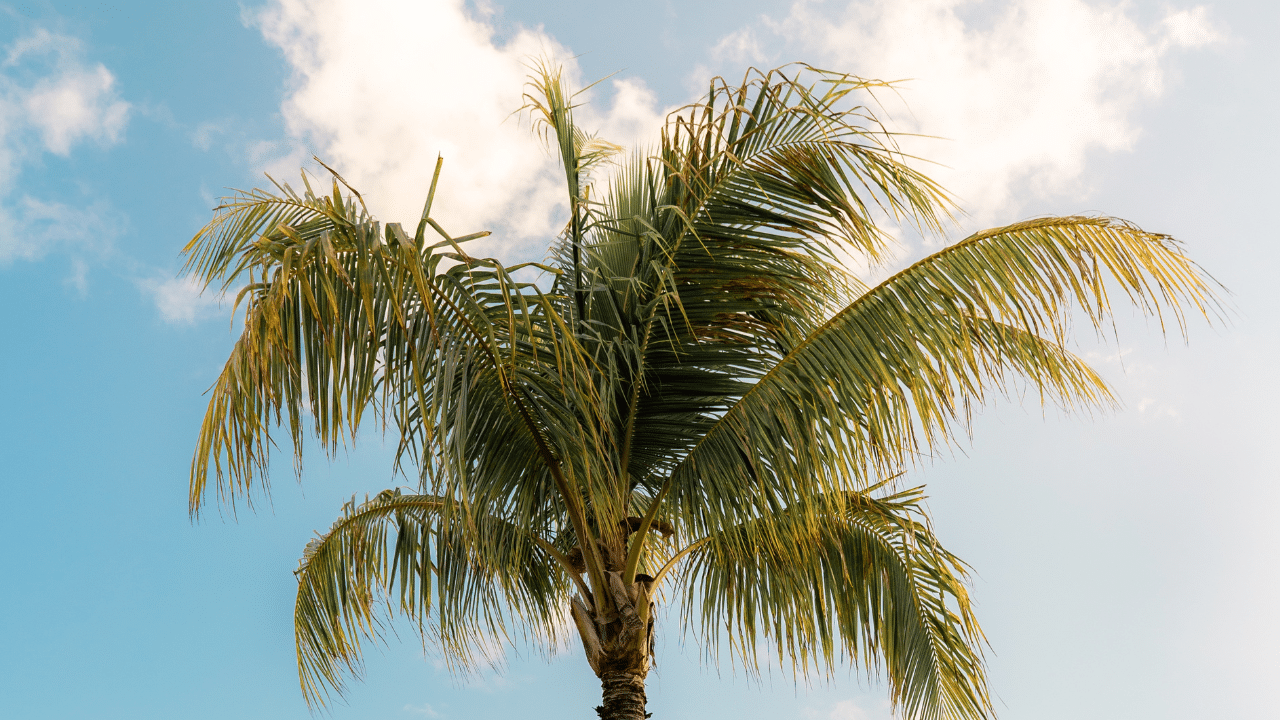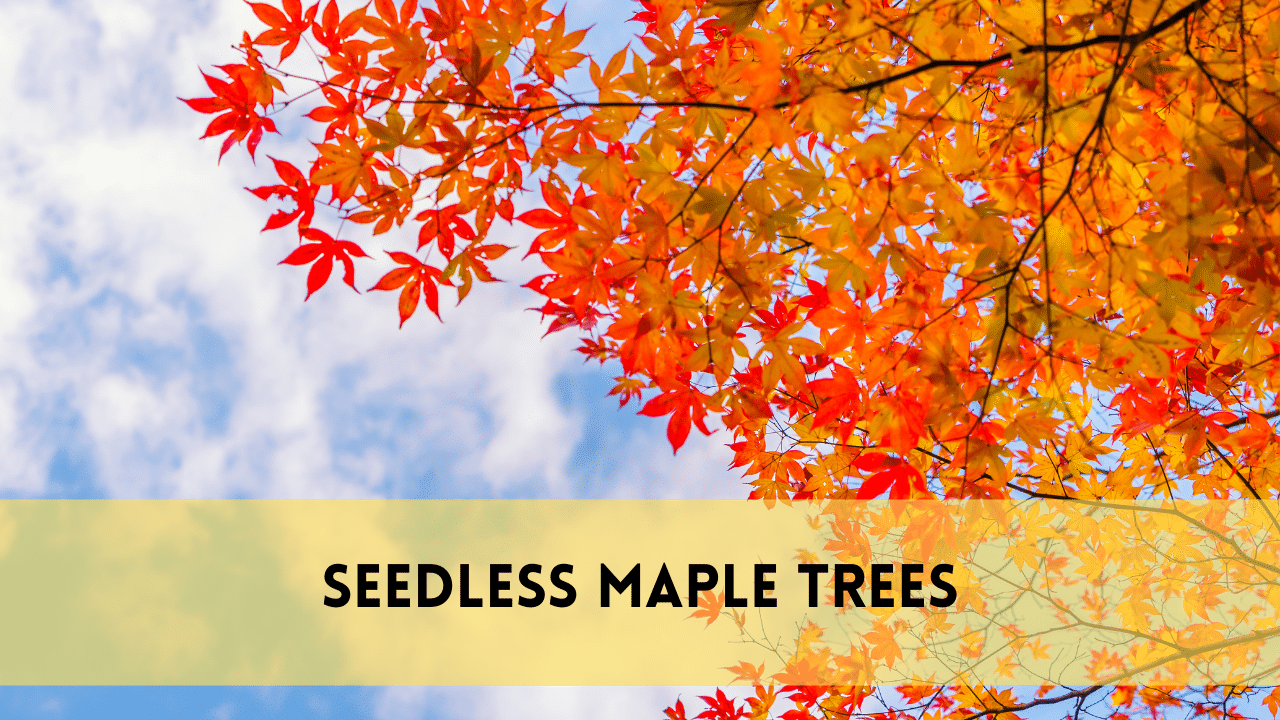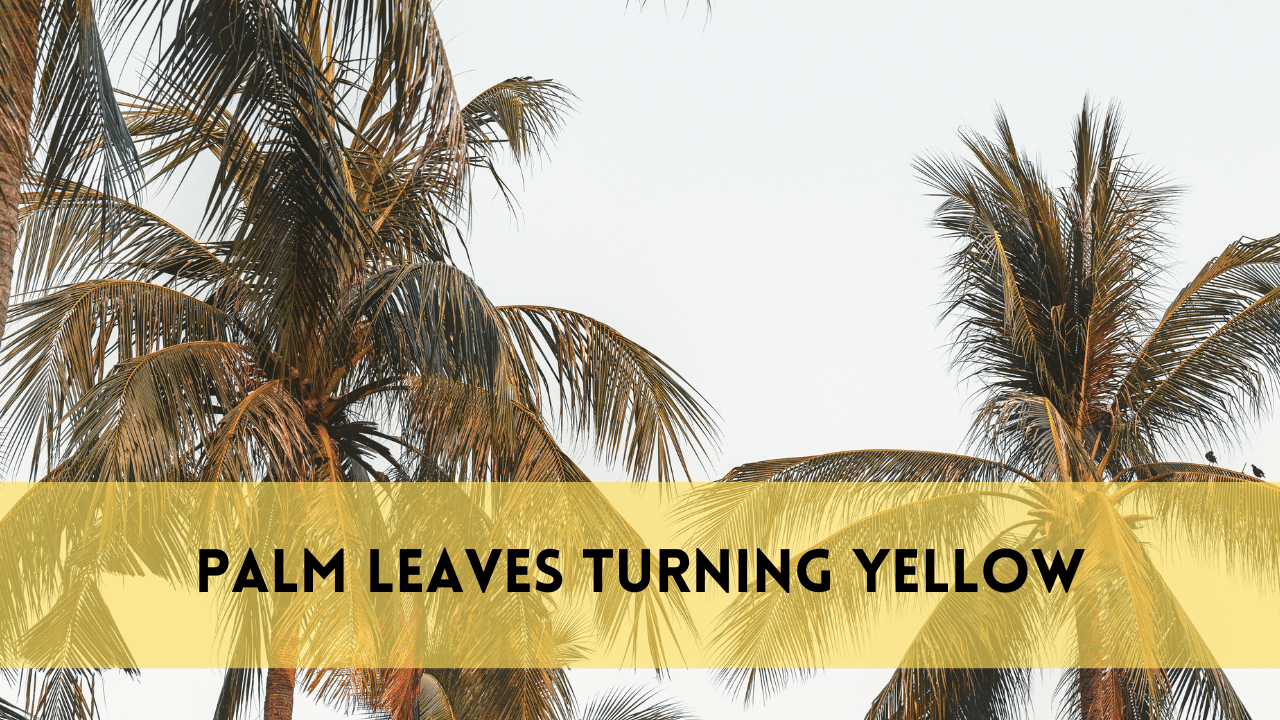Palm leaves turning yellow can feel like watching your tropical paradise fade in slow motion. It often starts with just one frond—maybe near the bottom of the tree—taking on an unfamiliar yellowish hue. Then, it spreads. You start to worry. Is your palm tree sick? Is it dying? Or is this something normal?
You’re not alone in wondering. Many homeowners, landscapers, and plant lovers see this color change and panic, especially when they’ve invested time, love, and money into nurturing these beautiful trees. But before you pull out the pruning shears or start dumping fertilizer, it’s worth understanding what’s actually happening beneath those fronds.
When Yellow Isn’t Just Yellow
The first time I noticed the palm leaves turning yellow in my own backyard, I assumed it was just part of the natural aging process. That might be true in some cases. Old palm fronds do yellow and eventually fall off, especially at the bottom. But when more than just the lower leaves start changing color—or when new growth is affected—it’s usually a signal that something’s wrong.
It’s like when your car starts making a strange noise. Sure, maybe it’s nothing, but would you risk driving cross-country without checking it out? Probably not.
Your palm tree is giving you a signal. Let’s decode it together.
The Watering Woes: Too Much or Too Little?
Palm leaves turning yellow often begins with one of the most basic needs: water. But here’s the tricky part—not all palms like the same amount.
In my experience, the number one mistake people make is watering inconsistently or excessively. Some palms prefer moist soil, while others like it drier between waterings. Overwatering can lead to root rot, essentially choking your palm’s ability to absorb nutrients. Underwatering, on the other hand, causes dehydration, making the fronds droop and yellow.
When I started adjusting my watering schedule—taking cues from the soil’s moisture rather than sticking to a rigid calendar—things started to shift. My palms stopped their downward spiral. Sometimes, getting back to green is as simple as listening to the soil.
Nutrient Deficiency: The Silent Thief
Next up: nutrition. Palms are fussy eaters, and if they’re not getting the right mix, they let you know fast. Yellowing leaves can point to a lack of essential nutrients, especially nitrogen, magnesium, and potassium. If you’ve ever seen Palm leaves turning yellow with green veins or scorched edges, it’s likely a potassium or magnesium issue.
I remember testing my soil after battling this problem for months. Turned out my sandy Florida soil was draining away every bit of potassium before the roots could absorb it. A high-quality palm fertilizer, rich in slow-release nutrients, finally helped my palms regain their signature deep green color.
It’s a reminder that beautiful growth starts underground. Healthy soil means healthy leaves.
Sunshine Matters: Are Your Palms Getting Burned or Bored?
Another common cause of palm leaves turning yellow? Light. Just like people, palms can get sunburned or feel sluggish without enough light. Some species thrive in full sun, while others are happier with filtered rays.
If palm leaves turning yellow and crispy, especially on the tips, it might be getting too much direct sun. On the flip side, if your indoor palm looks dull and pale, it’s likely begging for more light.
Once I moved my Areca palm a few feet closer to the window, it perked up within weeks. That simple shift in lighting made all the difference. Sometimes it’s not about doing more—it’s about doing it right.
Pests: The Tiny Culprits You Can’t See
One of the more frustrating reasons for palm leaves turning yellow is pest infestation. Spider mites, scale insects, and mealybugs love hiding in the nooks and crannies of your palm tree. They feed on the plant’s juices, draining it of nutrients and leaving yellowed, weakened leaves in their wake.
I once discovered a tiny army of spider mites on the underside of my palm fronds—so small they looked like specs of dust until I sprayed them and they scattered. Regular inspection and prompt treatment with insecticidal soap or neem oil can help prevent a small problem from becoming a full-blown crisis.
Keeping your palms clean and dust-free also helps deter these invisible invaders.
Disease: The More Serious Side of Yellowing
If your palm leaves turning yellow seem to be spreading fast or affecting even new growth, disease might be the culprit. Fungal infections like Fusarium wilt or Ganoderma butt rot are deadly and often irreversible. In some heartbreaking cases, the only solution is removal of the Palm tree.
The first palm I ever lost was to a disease. It happened fast. I didn’t know the signs, and by the time I called an arborist, it was too late. Since then, I’ve learned the importance of early detection. Black spots, oozing trunks, or an overall wilted appearance often mean it’s time to call a professional.
Not everytime palm leaves turning yellow spells disaster, but when something feels off, it’s okay to ask for help.
The Role of Transplant Shock and Environmental Change
Have you recently moved or repotted your palm? Palms don’t always take change well. When relocated, they can go into a kind of “shock,” and one of the first symptoms is—you guessed it—yellowing leaves.
After transplanting my Kentia palm indoors, I watched it yellow dramatically for two months. It wasn’t dying; it was adjusting. Slowly, with consistent care and a stable environment, the new leaves came in fresh and green. It taught me that patience can be as important as any fertilizer.
Palm trees are resilient, but they’re not immune to stress.
Understanding Your Palm’s Species-Specific Needs
Not all palm trees are the same. The needs of a Queen Palm differ from those of a Pygmy Date Palm or a Majesty Palm. Each has its own ideal watering routine, light exposure, and soil preference. What helps one thrive might harm another—and that’s often where issues like palm leaves turning yellow begins.
This was one of my earliest mistakes—treating all my palms the same. Once I started tailoring care based on each species’ native environment, I saw healthier growth and fewer yellow leaves. Researching your palm type isn’t just helpful—it’s essential.
Think of it like a tailored suit. One-size-fits-all just doesn’t work when it comes to palms.
Yellow Leaves Don’t Always Mean Doom
Here’s the good news: sometimes, palm leaves turning yellow is completely normal. Older fronds naturally die off as part of the growth cycle. If only the bottom leaves are yellowing and the rest of the tree looks healthy, there’s probably nothing to worry about.
But if the yellowing spreads upward, affects new leaves, or is paired with other symptoms like brown tips, wilting, or soft stems, it’s time to investigate deeper.
Knowing the difference between natural aging and a cry for help is key to successful palm care.
FAQs
How often should I water to prevent Palm leaves turning yellow?
It depends on the species and climate. Generally, water when the top few inches of soil are dry. Avoid overwatering to prevent root rot.
Can yellow palm leaves turn green again?
Unfortunately, no. Once a leaf turns yellow due to stress or damage, it won’t regain its green color. Focus on healthy new growth instead.
Is it okay to cut off yellow palm leaves?
Yes, if they’re completely yellow or brown. Pruning can help the plant redirect energy to healthier parts, but avoid cutting partially green fronds.
What’s the best fertilizer for yellowing palm leaves?
Look for a slow-release palm fertilizer with a balance of nitrogen, potassium, and magnesium. Apply according to the label and your palm’s seasonal needs.
Are indoor Palm leaves turning yellow for the same reasons as outdoor ones?
Mostly, yes. But indoor palms are more sensitive to low humidity, poor lighting, and dry air, which can also cause yellowing.
Conclusion:
Palm leaves turning yellow is often a warning, but it’s not the end of the story. Whether it’s a simple fix like adjusting your watering routine or a more involved issue like treating pests or disease, you can take action. Your palm tree is more than just decoration—it’s a living thing, and it’s communicating with you.
Take a moment to check the soil, assess the lighting, feel for moisture, and look closely for pests. With a little attention and consistent care, most palms bounce back beautifully.
I’ve been there—staring at drooping, discolored leaves and wondering if I’ve done something wrong. But palm leaves turning yellow isn’t the end of the road. Palms are survivors, and with the right approach, you’ll see that lush, green canopy return. Don’t give up on your tropical dream.



